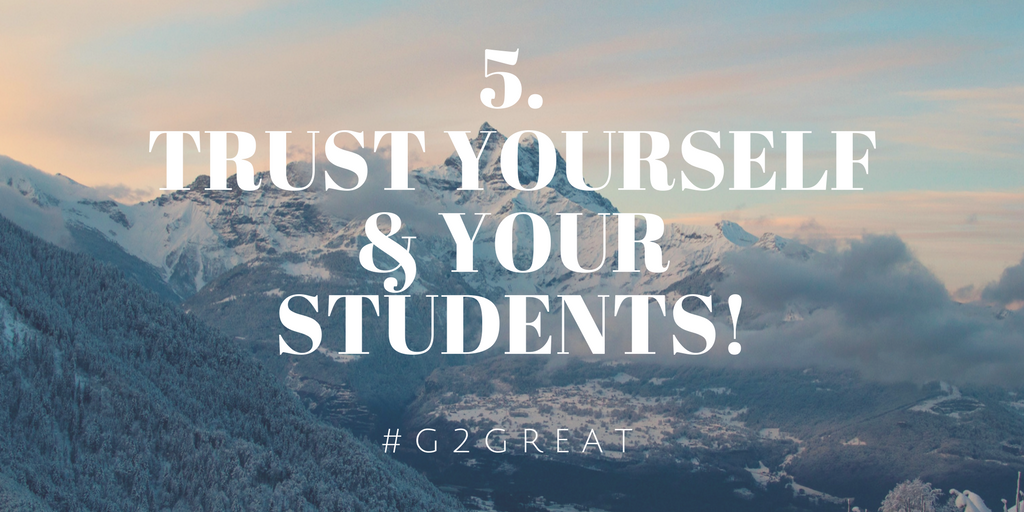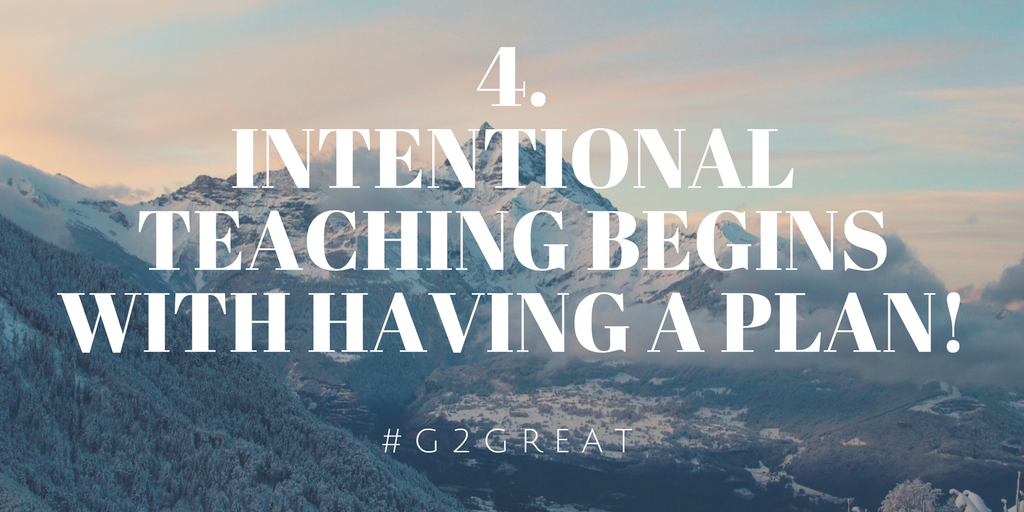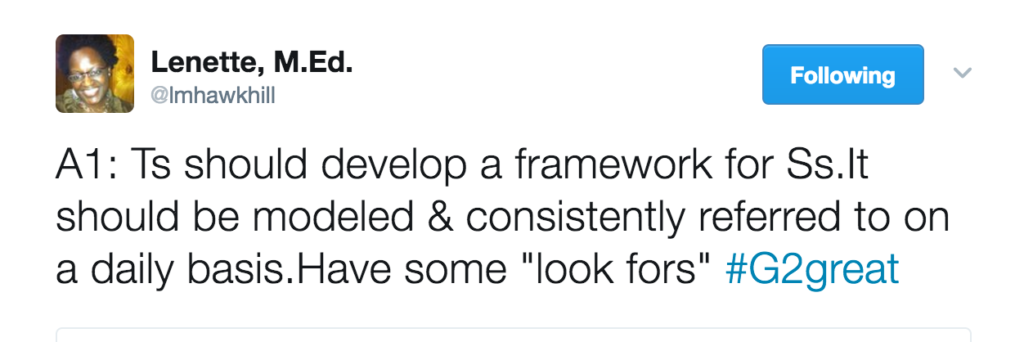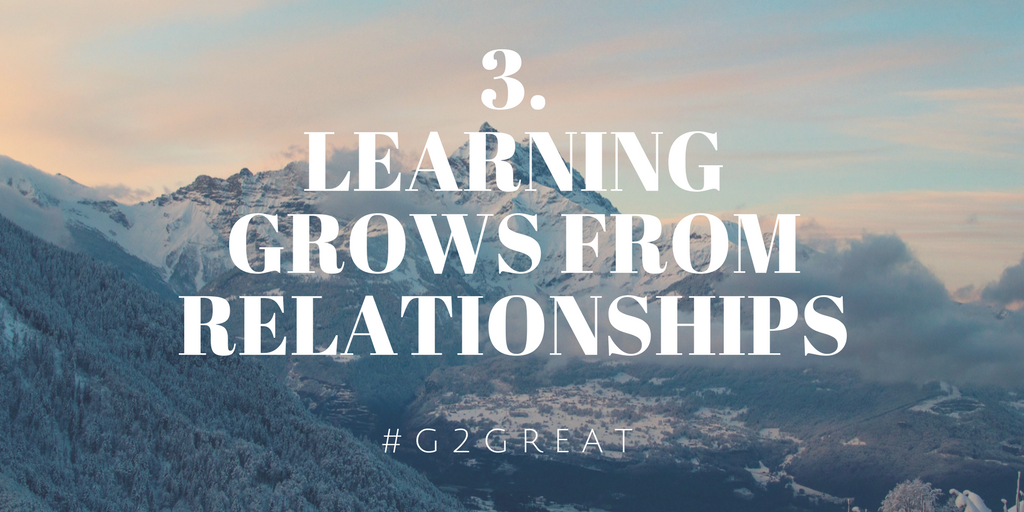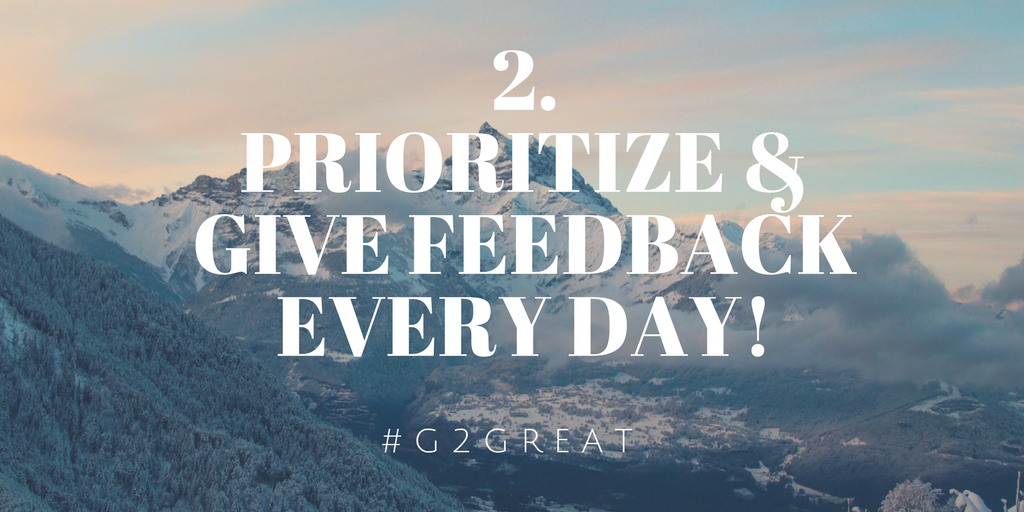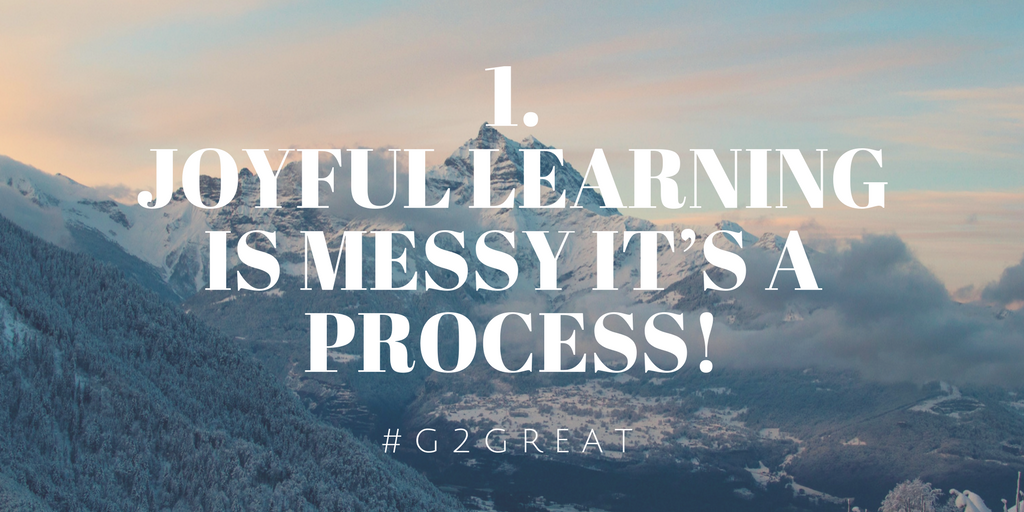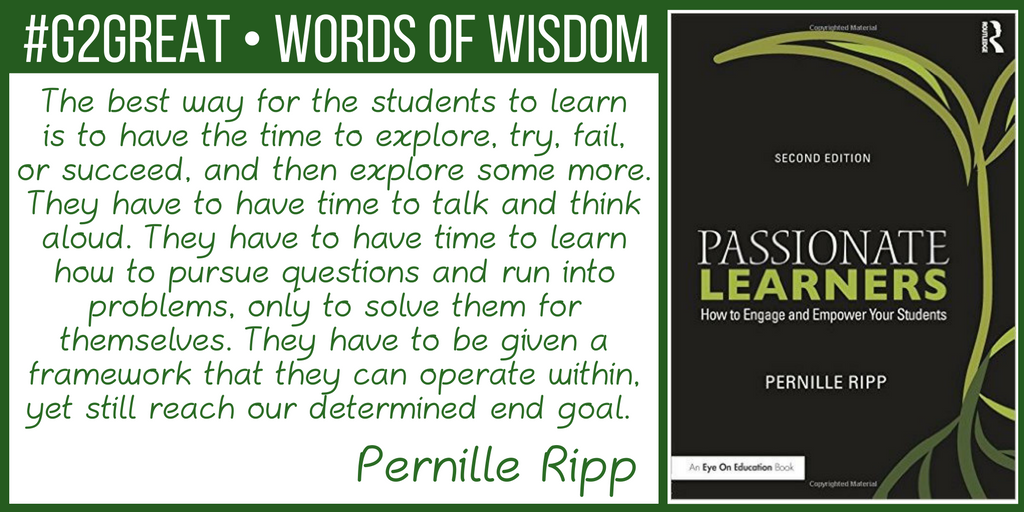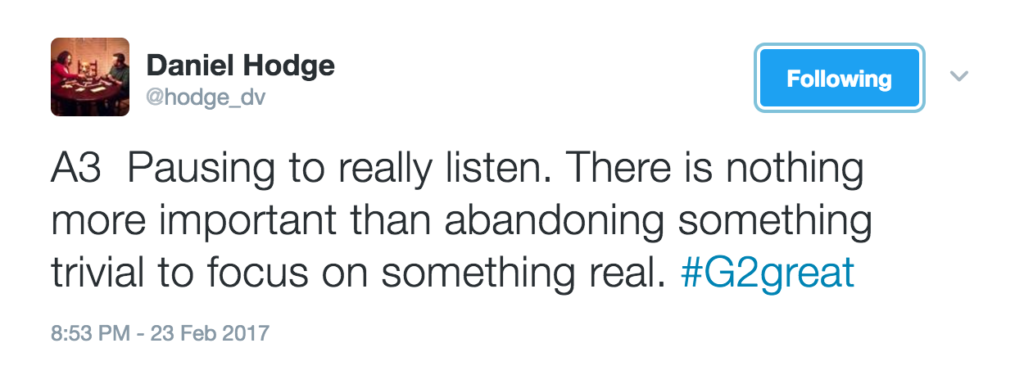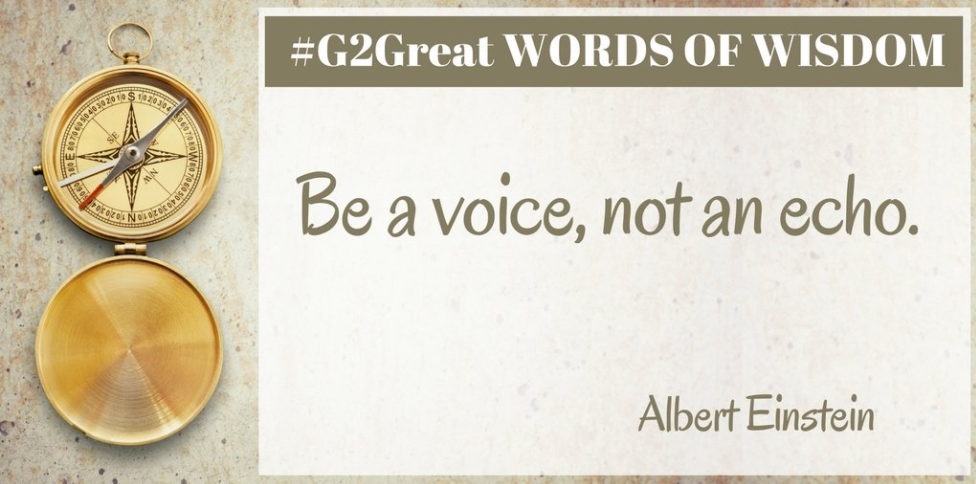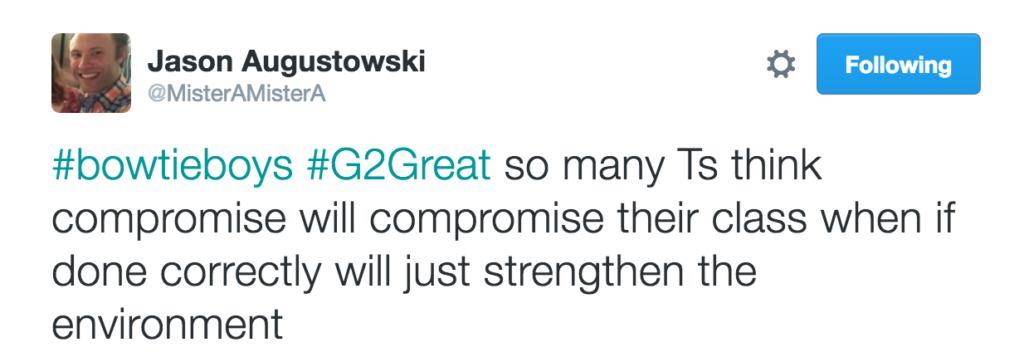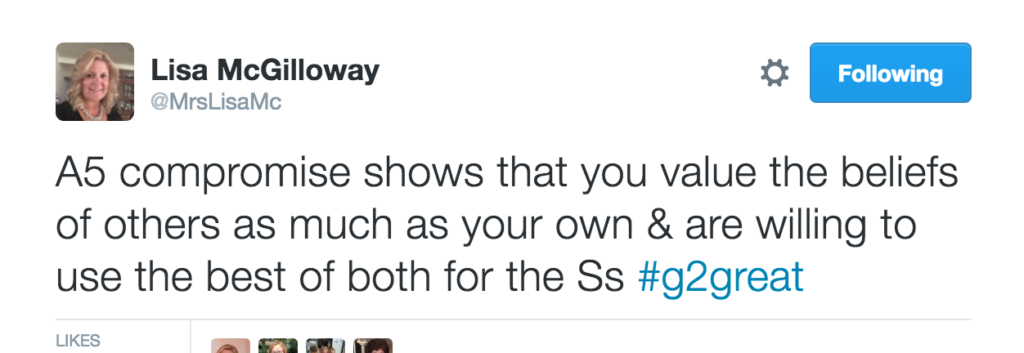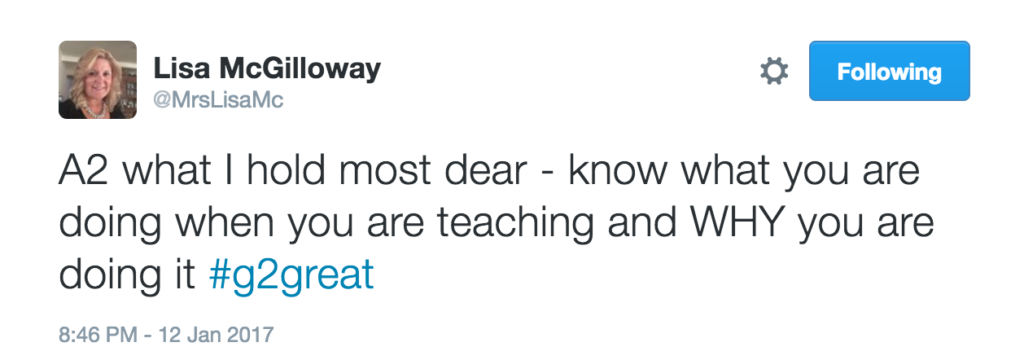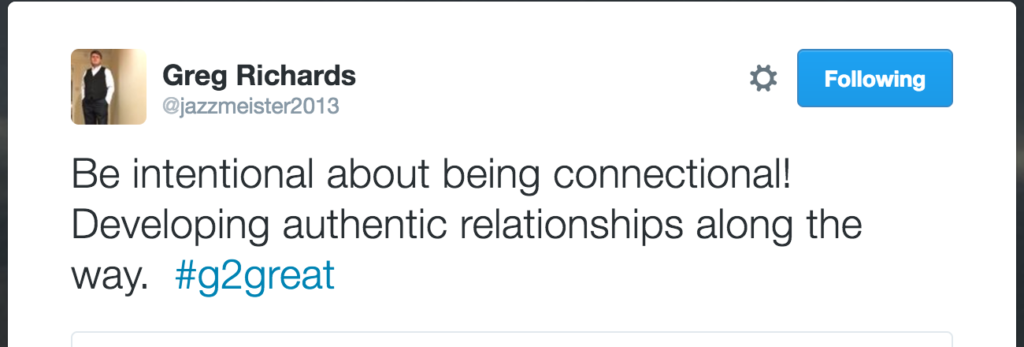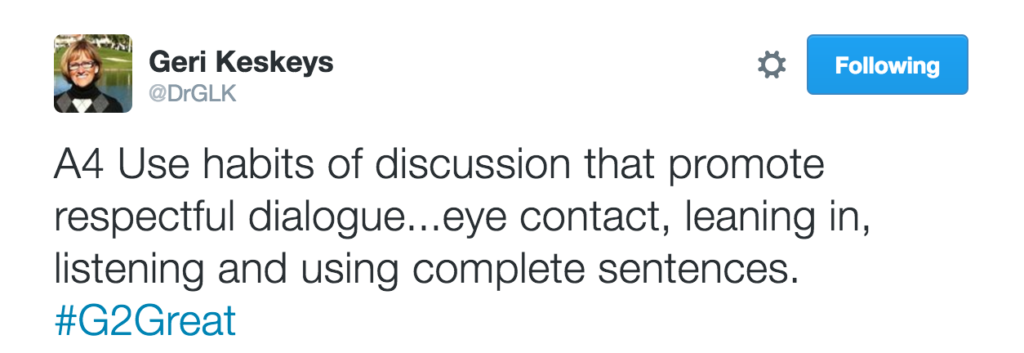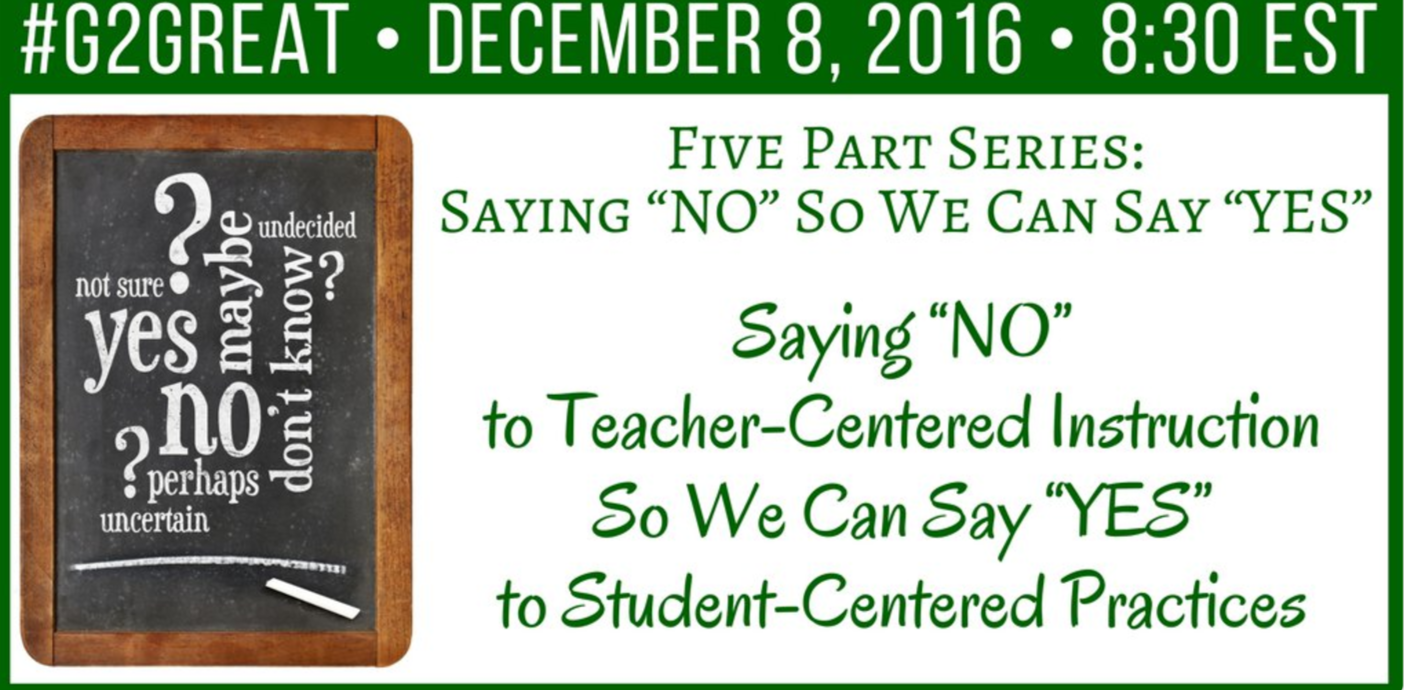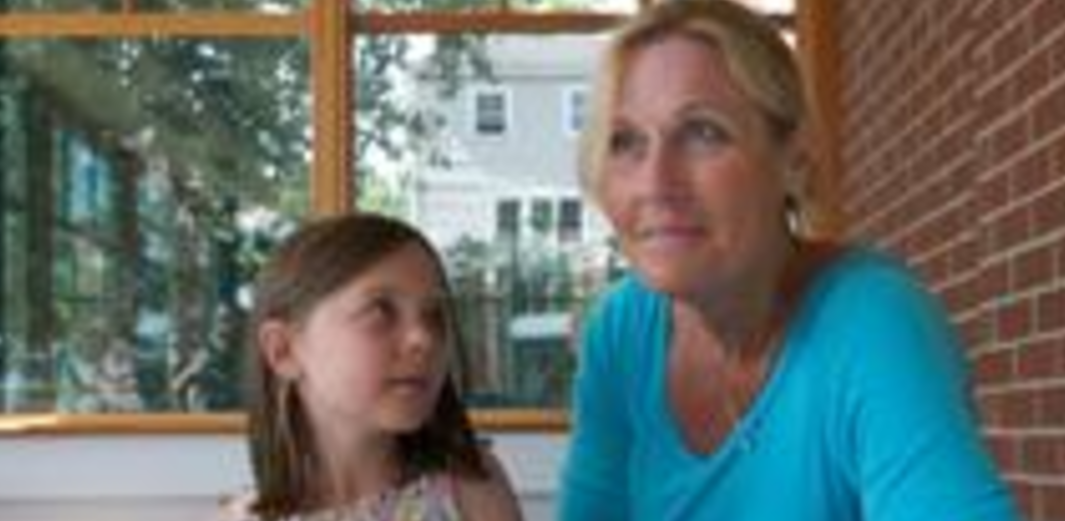By Jenn Hayhurst and Jill DeRosa
Now more than ever teachers need to be empowered, but it’s easier to find empowerment when you’ve got a friend at your side. On March 9, 2017 #G2Great celebrated the partnership of Gravity Goldberg and Renee Houser and their incredible new books What Do I Teach Readers Tomorrow? NonFiction and newly released (click here) fiction edition.
Jill and I believe deeply in the impact of partnerships because the key to empowerment begins when teachers work together. Through these collaborations, we can inspire, support, and challenge each other to grow as professionals. Partnerships help us to feel safe as we embrace the notion that it is good to step out of our comfort zones. In doing so we yield greater rewards for ourselves and our students. Every Thursday night we gather with our #G2Great PLN to learn together. This community is devoted to helping each other find our brave and push ourselves to be more responsive to the needs of our students.
Gravity and Renee joined the #G2Great community and began with a question most of us can relate to:
Decision-fatigue, the challenge teachers face in making a multitude of daily decisions, plagues us all so this question ignited a dynamic discussion! It turns out that making small tweaks can generate a big instructional impact within this process for teachers and students alike. This is just what so many of us needed to hear and what followed were some brilliant tweets! As we read through the tweets, we realized that many of us shared common beliefs – the seedlings for every great partnership! So we partnered your voices and through our G2Great collaboration we formed a supportive community where we could all appreciate advice that can empower what we teach tomorrow. You see, we are no longer separated by distance because we have a social media partnership where we can all lend our voices. We realized that these tweets were like the expert advice from colleagues. Using this expert advice, we generated A Top Ten Tips and Tweaks.
TOP TEN TIPS and TWEAKS
If you are reading this blog, then you are already a teacher who is a learner at heart. We hope that our words bring you strength so you may leave here empowered to teach tomorrow. Success is just one small tweak away. Every day we make a ton of decisions some small, some huge. Our most important job is to help students feel empowered and capable to work on their own. This is true for us as well. Gravity and Renee wrote these books to inspire us. They believe in us and now we have our collective thinking to help us to believe in ourselves as well. Thank you Gravity & Renee!


















